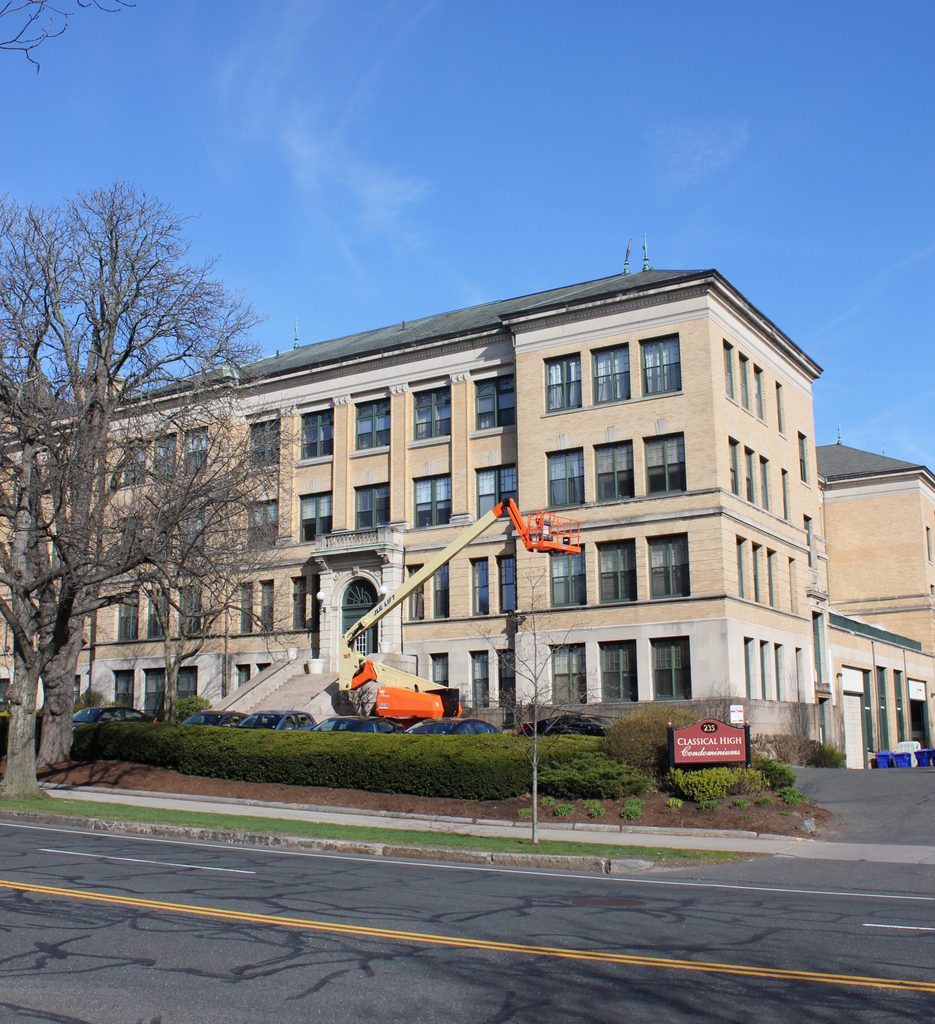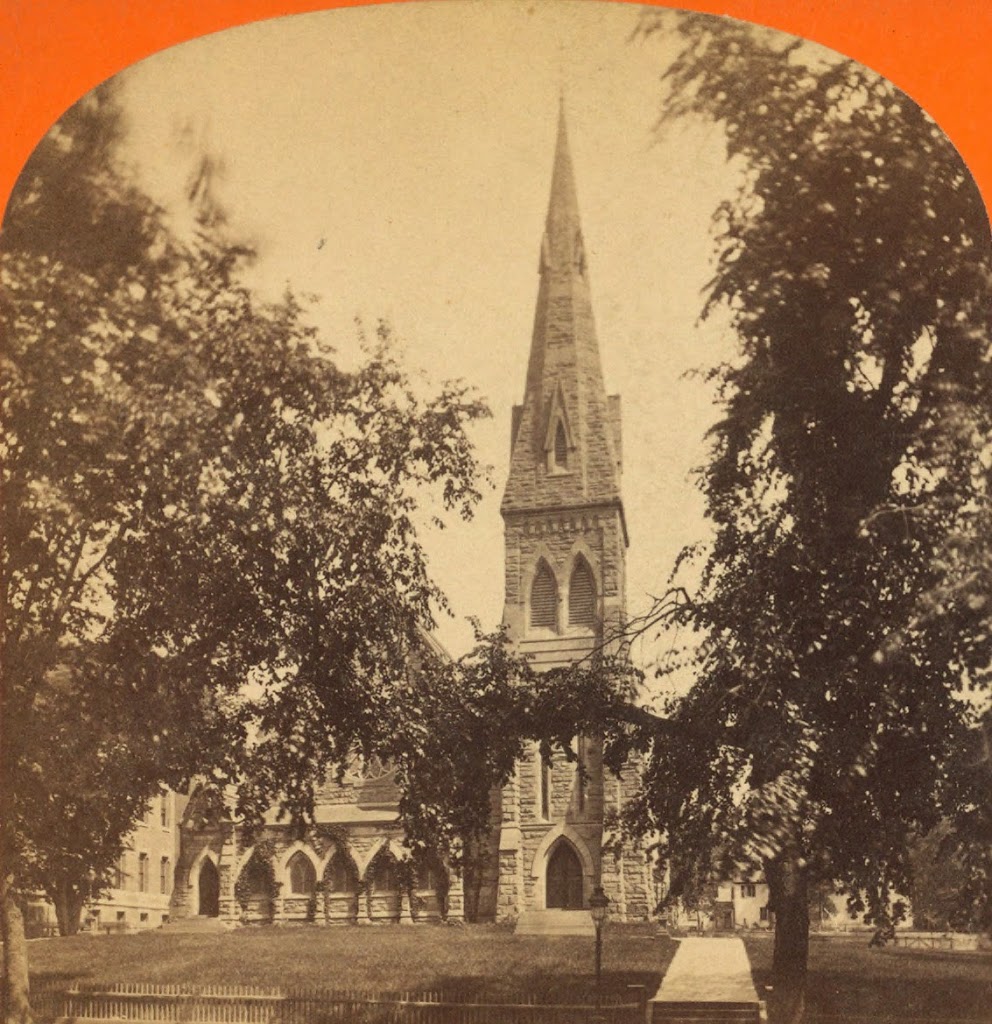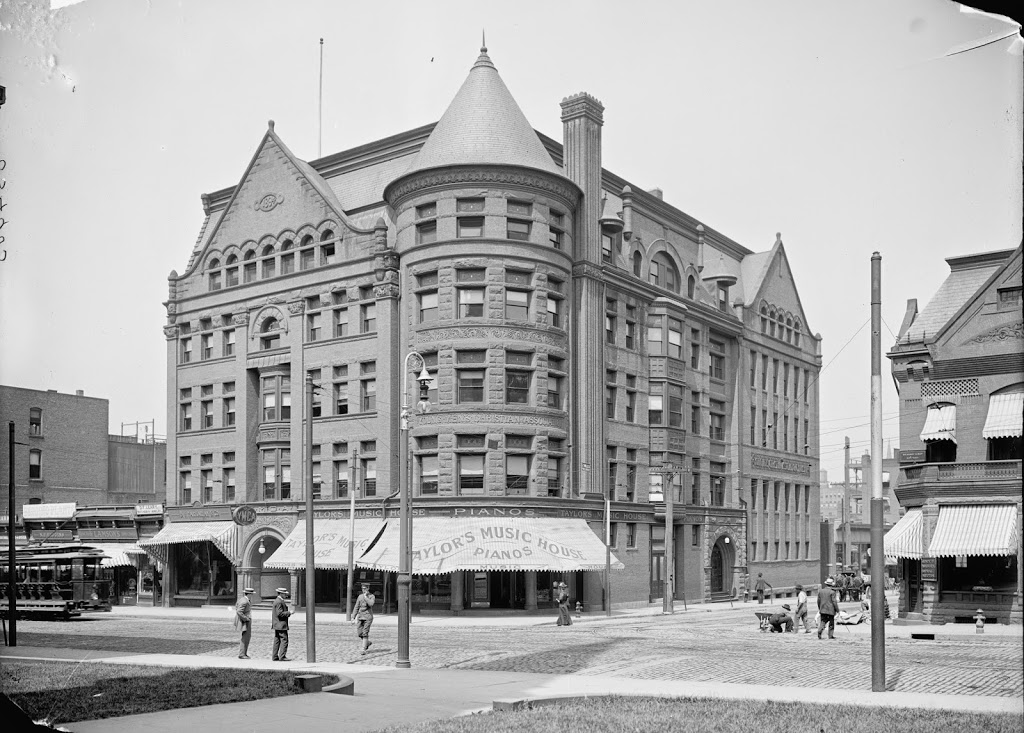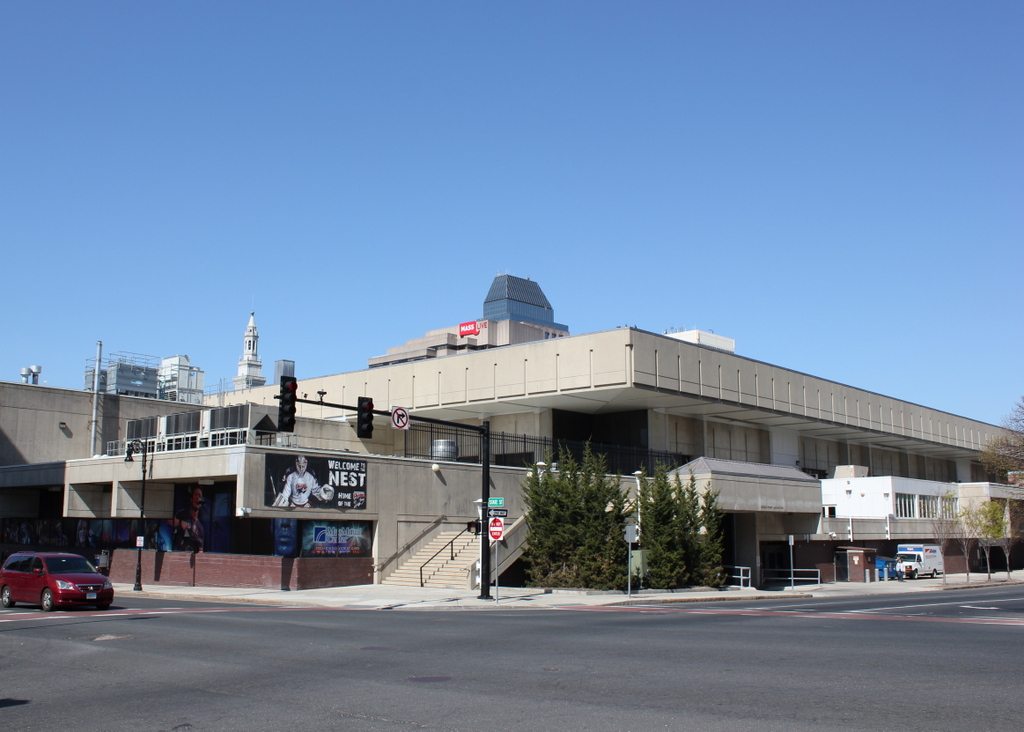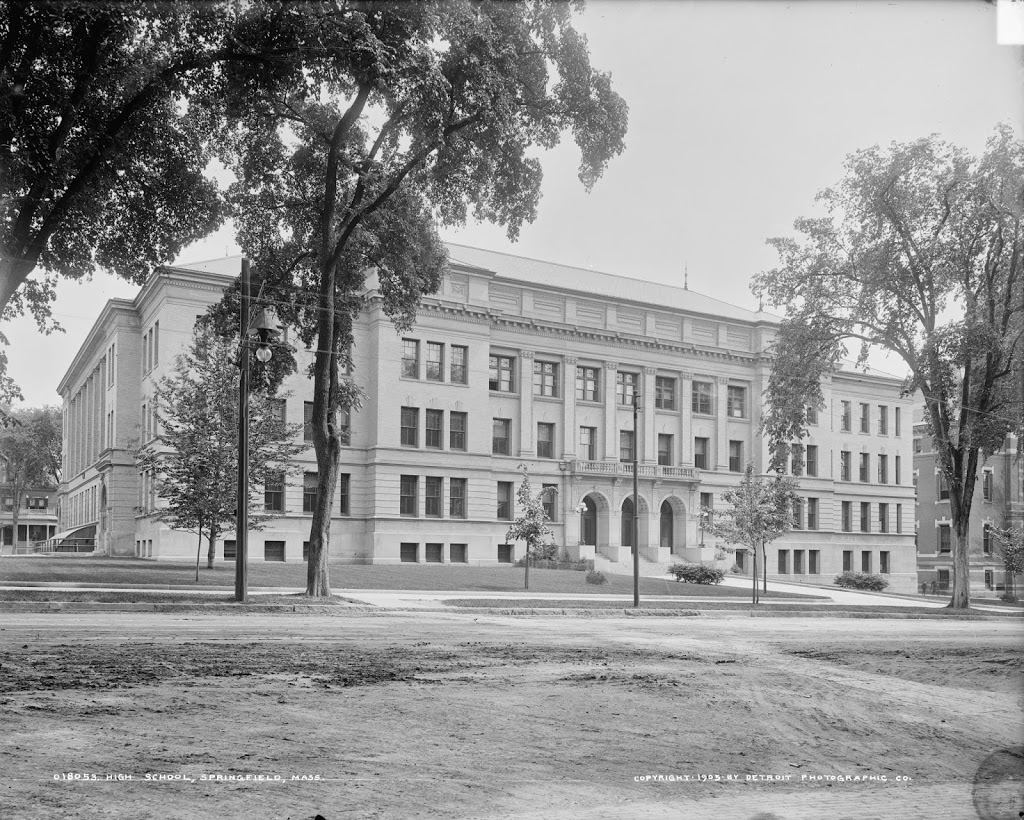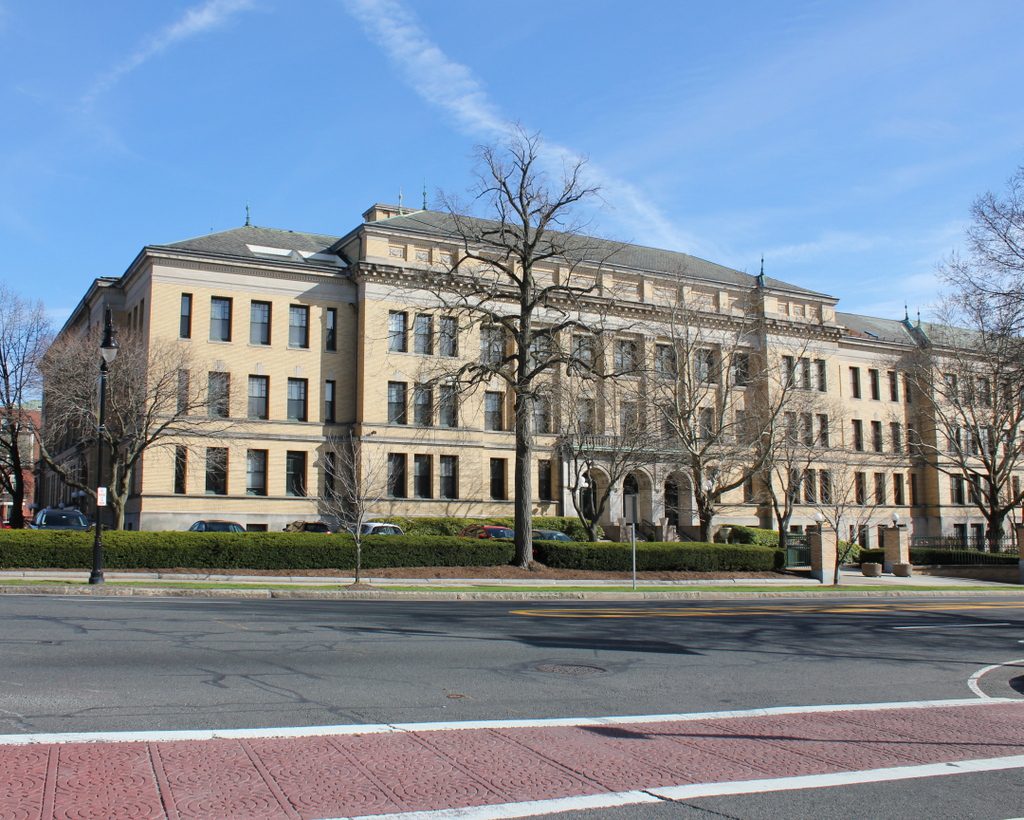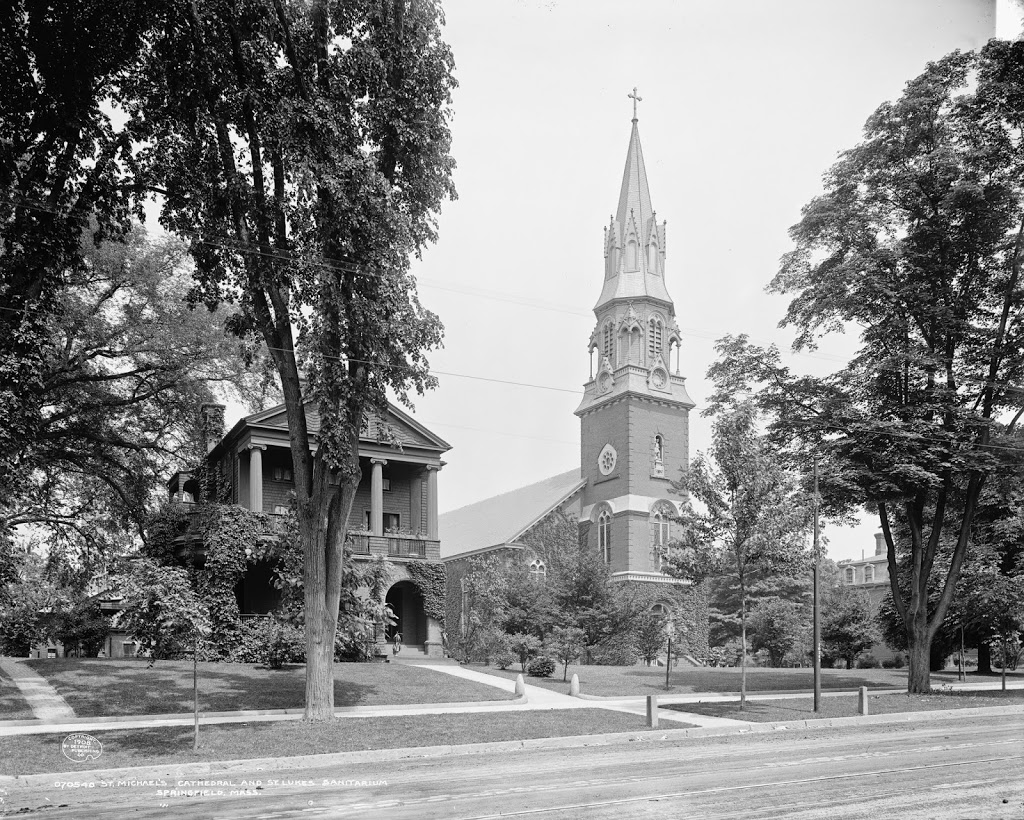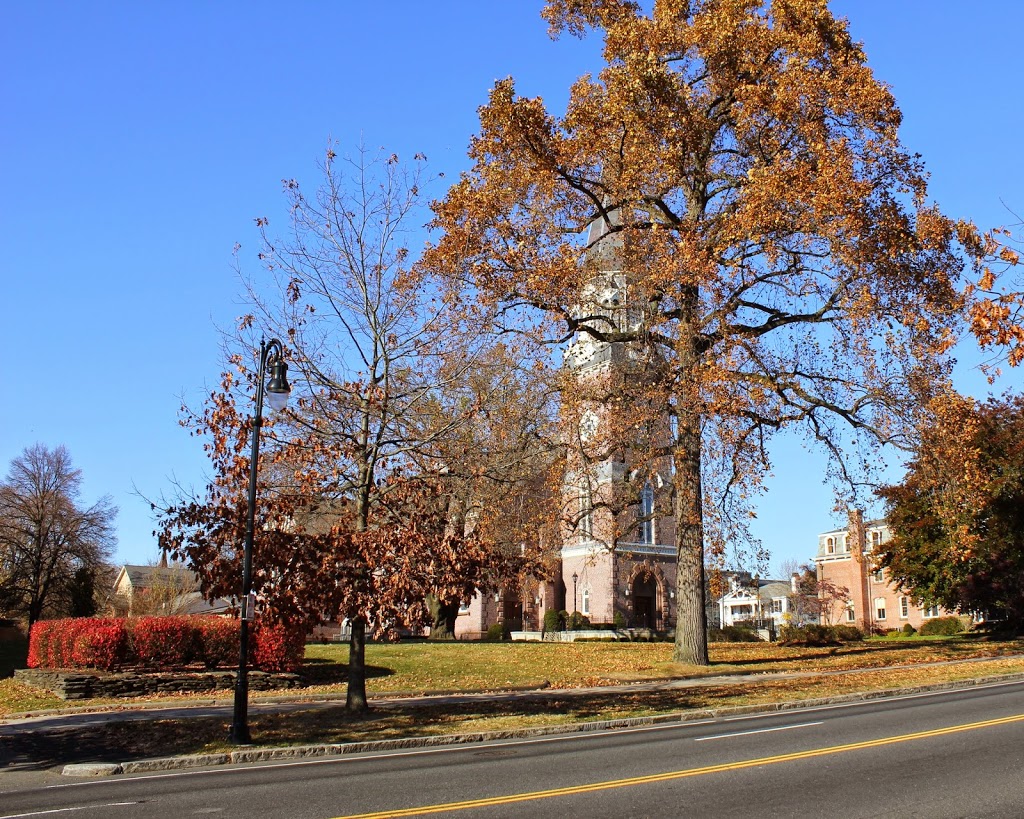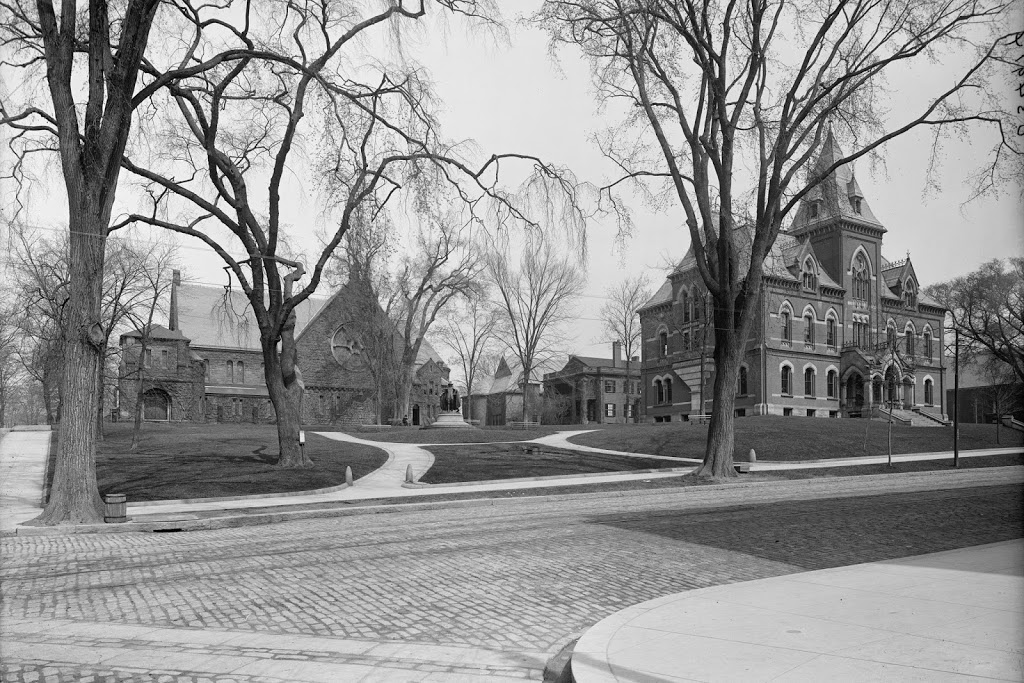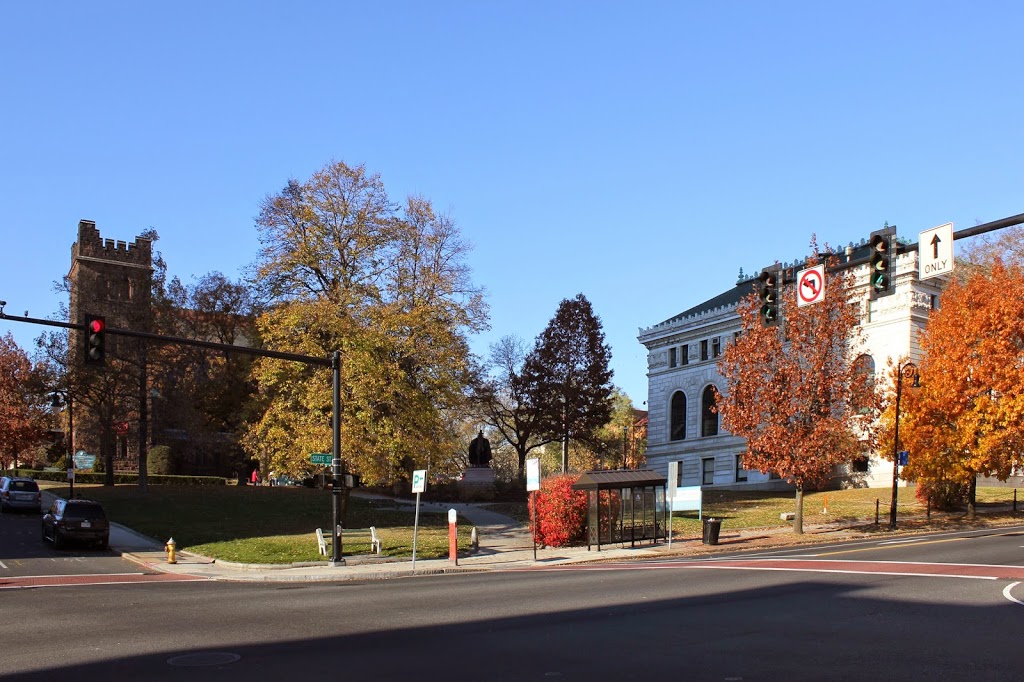Springfield’s old high school, located on State Street, sometime in the 1870s or 1880s. Photo courtesy of New York Public Library.
The scene in 2019:
Built in 1874, the building in the top photo was once Springfield’s high school building. It was used as the high school until 1898, when the older part (left-hand side) of Classical High School was completed. After that, the building was used as a grammar school until 1922, when it was demolished to allow for the expansion of Classical High School. It was used as a high school until 1986, and has since been converted into condominiums.


